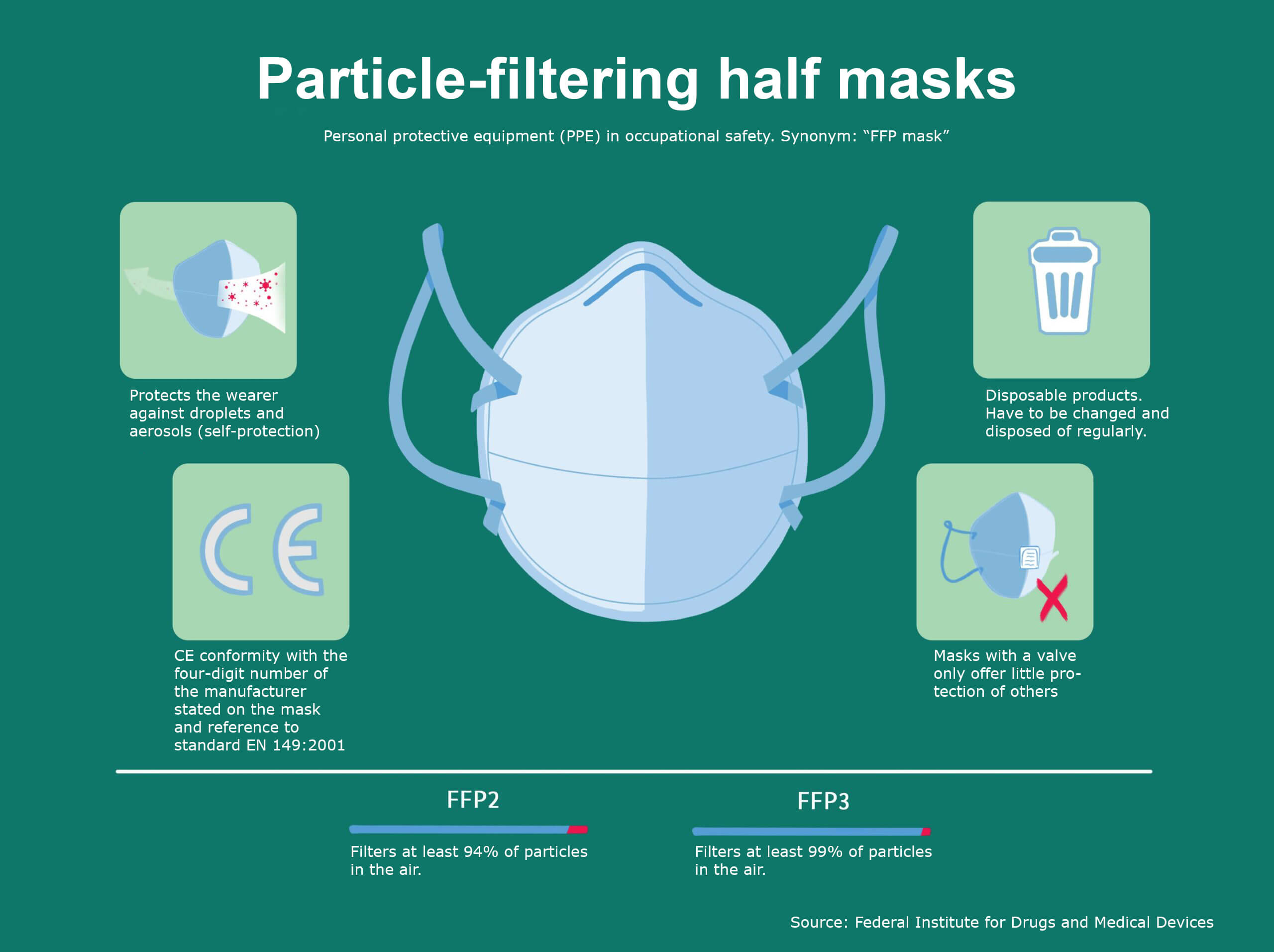Status Quo
Filter masks now
What FFP2 masks can do –
and what they cannot
It’s hard for most people to understand how the pandemic could spread so fast in spite of the protective measures. Here we must look more closely at the main form of transmission – and also at the filter masks which have been available and approved up to this point.
The coronavirus has a size of around 80-140nm and belongs to the highest risk category of viruses – Class III. Initially it was thought that the virus was spread through droplets and aerosols. We now know that it can spread in the air irrespective of this and can survive for up to 30 hours without a host.
Due to a lack of alternatives, at the beginning of the corona pandemic almost any type of face mask was permitted: homemade cotton masks, plexiglass shields or disposable medical masks. Since at least the second lockdown, a medical face mask or FFP mask has been mandatory, and the filtering properties have been set out in statutory provisions and technical standards. The safety classification of these filter masks comes from workplace health and safety.
But even with the highest quality FFP2 or FFP3 mask, the protective effect is only guaranteed if it is close-fitting and worn continuously – and if its effectiveness is not reduced as a result of moisture penetration.
The FFP2 masks which people are currently advised to wear offer the following protection:
‘FFP2 masks filter at least 94% of the particles found in the air and provide protection up to 10 times the current safety limits (MAC*). Filter masks in this protection category protect the wearer from solid and liquid particles, dust, smoke and aerosols, which are harmful for health.FFP2 filter masks are used in areas where there are fibrogenic particles, which in the short term can lead to irritation of the respiratory tract and in the long term can damage the lung tissue. In addition they provide partial protection against Class II viruses. But, in fact, not against Class III viruses! For these, an FFP3 mask is required.’
Source: Uvex
‘Even with a mask on, the social distancing recommended by the Robert Koch Institut (RKI) of keeping at least 1.5m from others should be observed. Masks should fit properly and cover the nose, mouth and cheeks. The edges of the mask should fit tightly and not allow any air to pass under the mask. An FFP mask can only perform to its full filtering capacity if it fits closely. When first putting it on, the mask should be tested to ensure that it allows enough air through, so that normal breathing is not obstructed. If a mask becomes damp, it should be taken off and changed. When taking off the mask, it should always be held by the ties. After taking off the mask, the hands should be thoroughly washed in accordance with the general hygiene regulations (with soap for at least 20-30 seconds). The masks are intended by the manufacturers to be disposable. They should be changed frequently and disposed of after use.’
Source: German Federal Institute for Drugs and Medical Devices (BfArM)
A barrier only – no filter
FFP2 and FFP3 masks basically only provide protection for as long as their electrostatic charge is intact. Die Viren werden nicht dadurch gefiltert, weil die Maschen des Gewebes so eng sind, sondern weil das Gewebe elektrostatisch aufgeladen ist.
This electrostatic charge only functions, however, as long as the mesh does not become damp. . In rain, high-moisture atmospheres or due to perspiration or the moisture from breathing, even the best masks lose their effectiveness sooner or later.
In this respect, current face masks only provide limited protection for a limited time. add the fact that it is not known how long coronavirus vaccinations are effective against mutations. But this is not the case with Securer protection.

